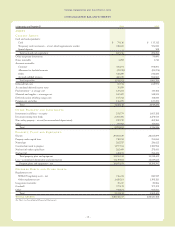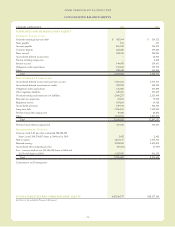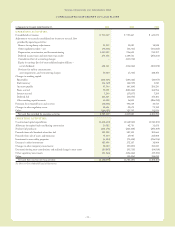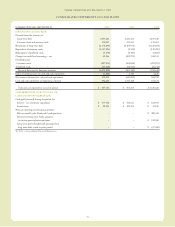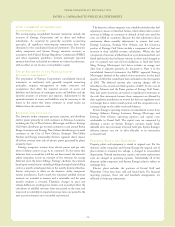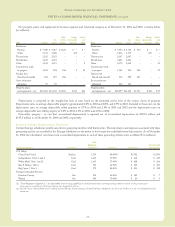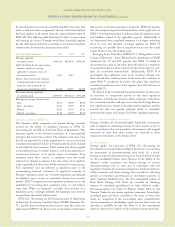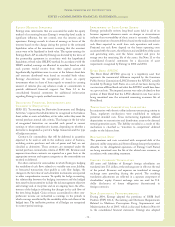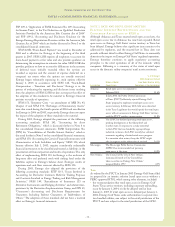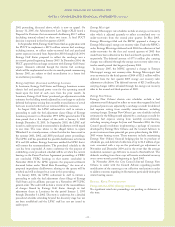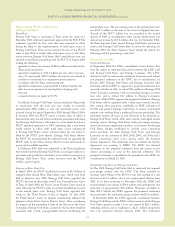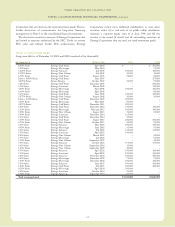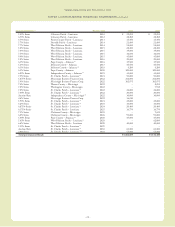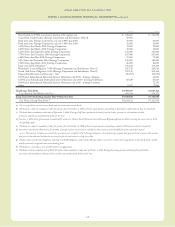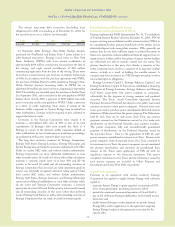Entergy 2004 Annual Report Download - page 62
Download and view the complete annual report
Please find page 62 of the 2004 Entergy annual report below. You can navigate through the pages in the report by either clicking on the pages listed below, or by using the keyword search tool below to find specific information within the annual report.
-60 -
Entergy Corporation and Subsidiaries 2004
•the recommendation that Entergy’s transmission organization,
possibly with the oversight of another entity, will continue to
serve as the transmission authority for purposes of retail open
access in Entergy Gulf States’ service territory.
•the recommendation that the decision points be identified
that would require prior to January 1, 2004, the PUCT’s
determination, based upon objective criteria, whether to proceed
with further efforts toward retail open access in Entergy Gulf
States’ Texas service territory.
After considering the proposal, in an April 2003 order, the
PUCT set forth a sequence of proceedings and activities designed
to initiate an interim solution. These proceedings and activities
included initiating a proceeding to certify an independent
organization to administer market protocols and ensure
nondiscriminatory access to transmission and distribution systems.
In July 2004 the PUCT denied Entergy’s application to certify
Entergy’s transmission organization as an independent organization
under Texas law. In its order, the PUCT also ordered: the cessation
of efforts to develop an interim solution for retail open access in
Entergy Gulf States’ Texas service territory, termination of the pilot
project in that territory, and a delay in retail open access in that
territory until either a FERC-approved RTO is in place or some
other independent transmissionentityis certified under Texas law.
Several parties have appealed the termination of the pilot program
aspect of the order, claiming the issue was not properly a part
of the proceeding.
In February 2005, bills were submitted in the Texas Legislature
that would clarify that Entergy Gulf States is no longer subject to a
rate freeze and specify that retail open access will not commence in
Entergy Gulf States’ Texas service territory until the PUCT certi-
fies a power region.
Louisiana
In November 2001, the LPSC decided not to move forward with
retail open access for any customers at this time.The LPSC instead
directed its staff to hold collaborative group meetings concerning
open access fromtime to time, and to have the LPSC staff monitor
developments in neighboring states and to report to the LPSC
regarding the progress of retail access developments in those states.
In September 2004, in response to a study funded by certain
industrial customers that evaluated a limited industrial-onlyretail
choice program, the LPSC asked the LPSC staff to solicit
comments and obtain information from utilities, customers, and
other interested parties concerning the potential costs and benefits
of a limited choice program, the impact of such a program on other
customers, as wellas issues suchas stranded costs and transmission
service. Comments from interested parties were filed with the
LPSC onJanuary 14, 2005. The LPSC has not established a
procedural framework for consideration of the comments. At this
time, it is not certain what further action, if any, the LPSC might
take in response to the informationit received.
Regulatory Assets
Other Regulatory Assets
The domestic utility companies and System Energy are subject to
the provisions of SFAS 71, “Accounting for the Effects of Certain
Types of Regulation.” Regulatory assets represent probable future
revenues associated with certain costs that are expected to be
recovered from customers through the ratemaking process. In
addition to the regulatory assets that are specifically disclosed on
the face of the balance sheets, the table below provides detail of
“Other regulatory assets” that are included on the balance sheets as
of December 31, 2004 and 2003 (in millions):
2004 2003
Asset Retirement Obligation -
recovery dependent upon
timing of decommissioning (Note 8) $ 380.1 $ 464.9
Deferred fuel - non-current -
recovered through rate riders when rates
are redetermined annually 21.9 28.2
Depreciation re-direct -
recovery begins at start of
retail open access (Note 1) 79.1 79.1
DOE Decommissioning
and Decontamination Fees -
recovered through fuel rates
until December 2006 (Note 8) 25.3 32.9
Low-level radwaste -
recoverytiming dependent
upon pending lawsuit 19.4 19.4
Pension costs (Note 10) 207.3 134.0
Postretirement benefits -
recovered through 2013 (Note 10) 19.1 21.5
Provisions for storm damages -
recovered through cost of service 124.5 123.3
Removal costs -
recovered through depreciation rates (Note 8) 53.2 45.6
Resource planning - recovery timing
will be determined by the LPSC in a base
rate proceeding (Note 2) 25.4 5.8
River Bend AFUDC -
recovered through August 2025 (Note 1) 37.5 39.4
Sale-leaseback deferral -
recovered through June 2014 (Note 9) 127.3 131.7
Spindletop gas storage facility -
recovered through December 2032 42.3 38.0
Unamortized loss on reacquired debt -
recovered over term of debt 169.9 164.4
Other - various 97.0 70.1
Total $1,429.3 $1,398.3
Deferred Fuel Costs
The domestic utilitycompanies areallowed to recover certain fuel
and purchased power costs through fuel mechanisms included in
electric rates that are recorded as fuel cost recovery revenues. The
difference between revenues collected and the current fuel and
purchased power costs is recorded as “Deferred fuel costs” on the
domestic utility companies’ financial statements. The table below
shows the amount of deferred fuel costs as of December 31, 2004
and 2003 that Entergyexpects to recover or (refund) through the
NOTES to CONSOLIDATED FINANCIAL STATEMENTS continued


